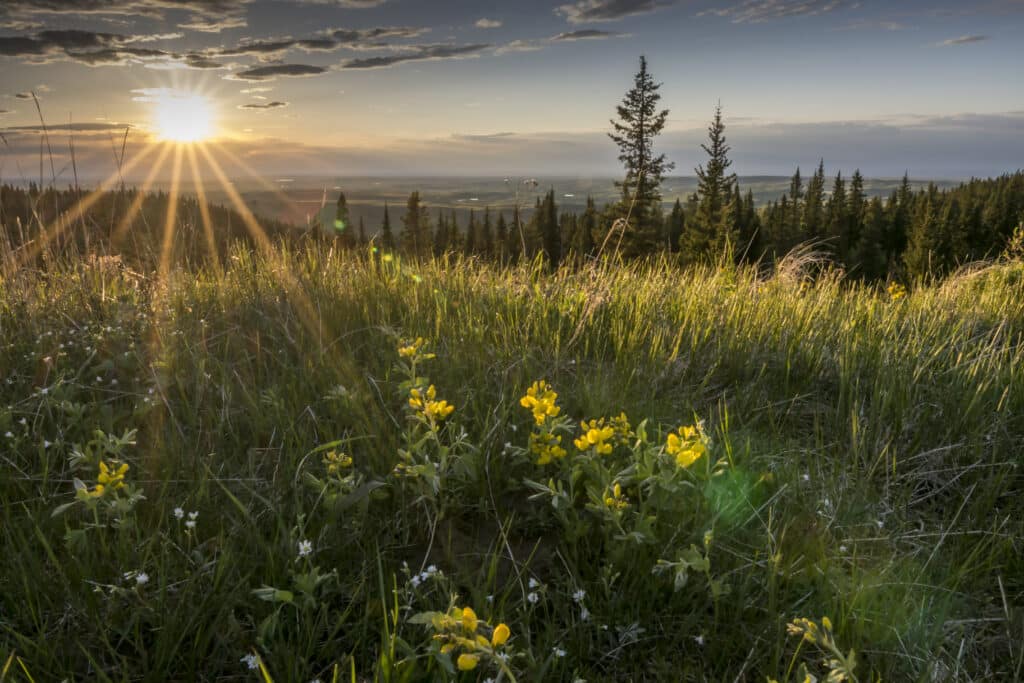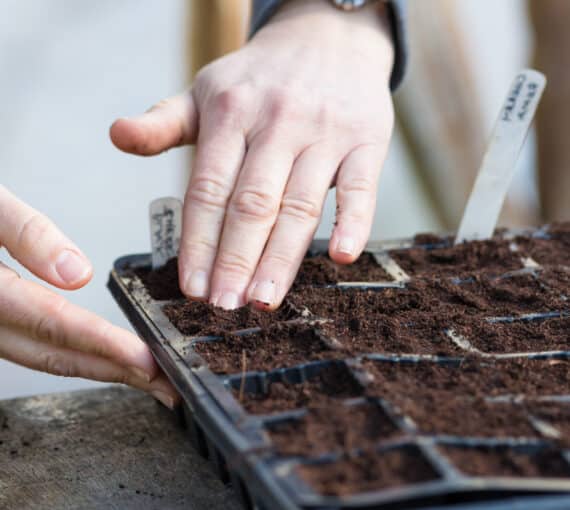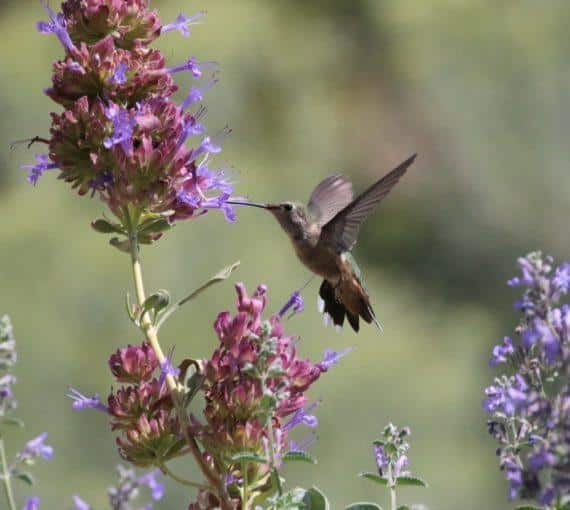
Golden bean, a wildflower native to the prairies, in Cypress Hills Interprovincial Park.
What may seem like a small contribution — a tiny flowerpot or garden patch of native wildflowers — can provide valuable habitat for prairie pollinators such as hummingbirds, bees and butterflies.
Native wildflowers are adapted to local climate and soils and require less care and watering once established. They provide sugar-filled nectar and protein-rich pollen for beneficial insects such as local butterflies and wild bees. Always try to find local sources for native plants.
Pollinators of the Prairies
Pollinators are critical to the health and productivity of ecosystems and agricultural landscapes in Alberta, Manitoba and Saskatchewan, which produce over half of Canada’s field crops. Canada is also the world’s leading canola producer; most is grown in the Prairie provinces and wouldn’t exist without pollinators.
It’s important to understand the impact pollinators have on nature and the economy. Pollinators maintain biodiversity, support plant reproduction and provide many other ecological services.
All pollinators have a vital, often-overlooked role in our economy. By pollinating many crops humans consume and trade, they’re essential to our food security. Scientists estimate that approximately 75 per cent of the world’s flowering plants and 35 per cent of global food crops depend on animal pollinators to produce.
To thrive, pollinators need food and shelter. Help them support you — create a pollinator paradise!
How to get started
Find your ecoregion’s native plants and wildflowers
Planting native plants and wildflowers supports local pollinators that have evolved to depend on those species for food and habitat.
Source native seeds and plants
Seeds can be organic (grown without synthetic fertilizers and pesticides), non-GMO (cultivated through pollination, not in a lab), open-pollinated (by nature e.g., insects, birds, wind, humans), heirloom (with an open-pollinated heritage) and rare. Look for native plants in local nurseries!
Start a pollinator paradise
A manicured lawn is not pollinator-friendly. But a yard, community garden, patio or window box filled with native plants can be a pollinator paradise.
Why choose native plants and wildflowers?
Native plants and wildflowers have evolved in this climate for generations. By creating a naturescape (native plant garden), you’ll help solve pollinator habitat loss. By avoiding expensive fertilizers and toxic pesticides, you’ll save time and money.
Native wildflowers and plants of the Prairies
When most folks think of “prairies” they might imagine vast plains and mega-agriculture. But Canada’s Prairie provinces have a variety of unique and beautiful native wildflowers and plants. For example, the prairie crocus (pulsatilla patens) is one of the first signs of spring. Native to Saskatchewan, it’s also found in Alberta and Manitoba.
Native wildflowers and plants found in the Prairie provinces include:
- Blanket flower
- Common yarrow
- Showy milkweed
- Prairie goldenrod
- Purple prairie clover
… and more!
Want to take another step?
Determine which ecoregion you live in and plant native wildflowers and plants specific to that area. Each ecoregion has unique ecological characteristics and, though many plants and wildflowers are native to multiple ecoregions, you may discover one that only grows where you live!
What’s an ecozone or ecoregion?
Canada has 20 ecozones (15 terrestrial and five marine) based on differences in climate, geology, landforms, vegetation and wildlife. They help identify and manage unique ecological regions.
Within each ecozone are ecoregions defined by a characteristic range and pattern in climatic variables.
Alberta, Manitoba and Saskatchewan have five ecozones, Taiga Shield, Boreal Pains, Prairies, Boreal Shield and Hudson Plains, which contain more than 10 ecoregions.
We have planting guides for the Prairie provinces’ most populated ecoregions. For more resources and plant lists visit Pollinator Partnership Canada.
POLLINATOR PLANTING GUIDES FOR THE PRAIRIES
The Butterflyway Project
The Butterflyway Project is a volunteer-led movement that is growing habitat for bees and butterflies in neighbourhoods throughout Canada.



